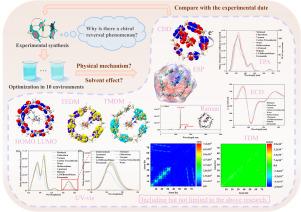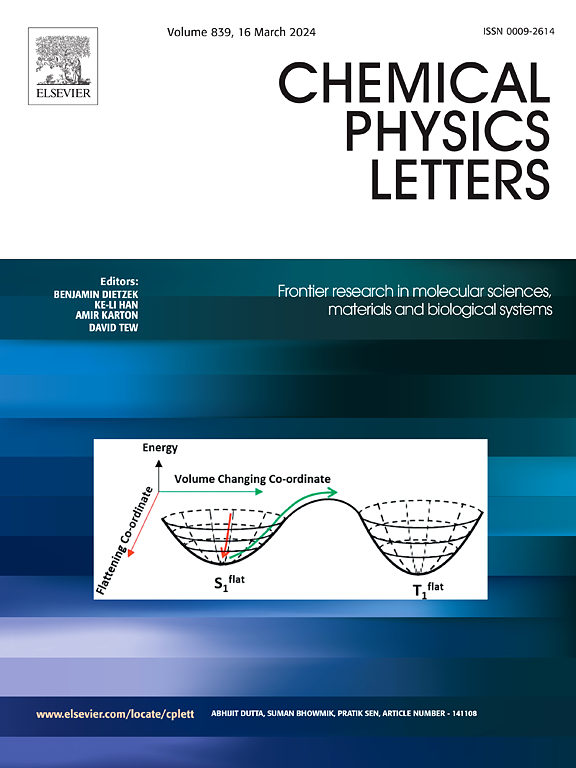Chiral inversion and nonlinear optical response of pseudo[7]catenane-type pillar[8]arene derivatives: Solvent effects and physical mechanisms
IF 3.1
3区 化学
Q3 CHEMISTRY, PHYSICAL
引用次数: 0
Abstract
This study employs density functional theory (DFT) and wavefunction analysis to elucidate the solvent-driven chiral inversion mechanism in molecular universal joint 3 (MUJ3). Key parameters were quantified via the SMD model, revealing a nonlinear correlation with optical responses. UV–Vis spectra exhibited significant solvent-induced red-shifts (_max up to 20 nm), attributed to enhanced electron localization and suppressed charge transfer (CT) via transition density matrix (TDM) and charge density difference (CDD) analyses. Notably, formamide and 1,2-DiBromoEthane maximized two-photon absorption cross-sections (_TPA 118 GM) through synergistic modulation of transition dipole moments. These findings provide strategies for manipulating supramolecular chiroptics.

伪[7]链烷型柱[8]芳烃衍生物的手性反转和非线性光学响应:溶剂效应和物理机制
采用密度泛函理论和波函数分析方法,对分子万向节3 (MUJ3)的溶剂驱动手性反转机理进行了研究。通过SMD模型量化了关键参数,揭示了其与光学响应的非线性相关性。紫外可见光谱显示出明显的溶剂诱导红移(Δλ_max达20 nm),这是由于通过过渡密度矩阵(TDM)和电荷密度差(CDD)分析增强了电子定位和抑制了电荷转移(CT)。值得注意的是,甲酰胺和1,2-二溴乙烷通过对跃迁偶极矩的协同调制使双光子吸收截面(σ_TPA≈118 GM)最大化。这些发现为操纵超分子致幻作用提供了策略。
本文章由计算机程序翻译,如有差异,请以英文原文为准。
求助全文
约1分钟内获得全文
求助全文
来源期刊

Chemical Physics Letters
化学-物理:原子、分子和化学物理
CiteScore
5.70
自引率
3.60%
发文量
798
审稿时长
33 days
期刊介绍:
Chemical Physics Letters has an open access mirror journal, Chemical Physics Letters: X, sharing the same aims and scope, editorial team, submission system and rigorous peer review.
Chemical Physics Letters publishes brief reports on molecules, interfaces, condensed phases, nanomaterials and nanostructures, polymers, biomolecular systems, and energy conversion and storage.
Criteria for publication are quality, urgency and impact. Further, experimental results reported in the journal have direct relevance for theory, and theoretical developments or non-routine computations relate directly to experiment. Manuscripts must satisfy these criteria and should not be minor extensions of previous work.
 求助内容:
求助内容: 应助结果提醒方式:
应助结果提醒方式:


